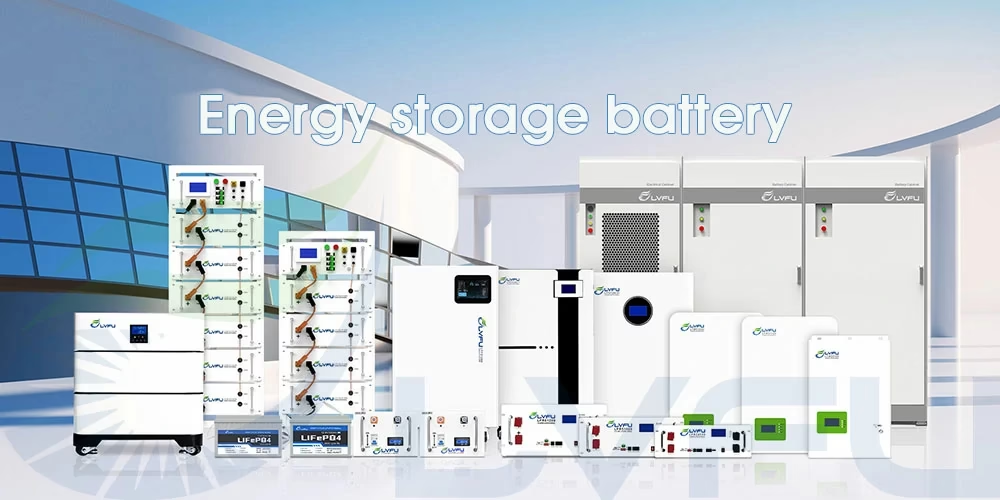As we know, energy storage battery serve as the primary medium for electrochemical energy storage. They manage the process of storing, releasing, and regulating energy through battery operations. Currently, mainstream energy storage batteries include lithium-ion batteries, lead-acid batteries, sodium-sulfur batteries, and flow batteries. Among these, lithium-ion batteries represent the most mature and widely adopted technology in energy storage.

Lithium-ion Batteries: The Mainstream Choice for Electrochemical Storage
Lithium-ion batteries consist of four key components: a cathode, an anode, an electrolyte, and a separator. These batteries store energy by shuttling lithium ions between the cathode and anode materials. Due to their high energy density and long cycle life, lithium-ion batteries are increasingly becoming the mainstream choice for electrochemical energy storage.
Additionally, we can categorize lithium-ion batteries based on their cathode materials, which include lithium cobalt oxide, lithium manganese oxide, lithium iron phosphate, and ternary batteries.
(1) Lithium iron phosphate (LFP) batteries show significant overall advantages in energy storage applications. They offer a moderate energy density while providing better safety and a longer service life compared to other types. Furthermore, their cost is relatively low.
(2) In contrast, lithium cobalt oxide batteries are much more expensive due to the scarcity of cobalt. They also suffer from shorter cycle life and poorer safety, which means they are rarely used in energy storage.
(3) Next, lithium manganese oxide batteries have an energy density similar to LFP batteries. Although their price is lower, their shorter service life results in a higher levelized cost of storage over their full lifecycle. Consequently, their application remains limited.
(4) Finally, ternary batteries deliver a much higher energy density than other types. Their service life can also reach 8–10 years. However, their safety performance is relatively poor, and their cost is significantly higher than LFP batteries. As a result, in energy storage scenarios where extremely high energy density is not essential, their application prospects are less promising compared to LFP batteries.

Lead-Acid Batteries: The Former Dominant Technology
Lead-acid batteries represent one of the earliest secondary batteries to be used on a large scale, with a history spanning over 150 years. They use lead dioxide as the cathode, metallic lead as the anode, and a sulfuric acid solution as the electrolyte. Thanks to their low storage cost, high reliability, and good efficiency, lead-acid batteries have been widely used in UPS systems. They also dominated China’s early large-scale electrochemical energy storage projects.
However, lead-acid batteries come with notable drawbacks, such as a short cycle life, low energy density, a narrow operating temperature range, and slow charging rates. Moreover, the use of lead poses significant environmental concerns. Because of these limitations, the future application of lead-acid batteries is expected to be greatly constrained.
Flow Batteries: Suitable for Long-Duration Energy Storage
Flow battery technologies include all-vanadium, iron-chromium, and zinc-bromine systems. Among them, all-vanadium flow batteries offer the best overall performance and are the most commercially advanced. Interestingly, the power of a flow battery depends on the reaction area of the electrodes, while its storage capacity is determined by the volume and concentration of the electrolyte. This design allows for highly flexible scaling of flow battery systems.
Although flow batteries currently make up a small share of the electrochemical energy storage market, their development is now accelerating. Vanadium flow batteries, in particular, offer a lower lifecycle cost compared to lithium-ion batteries, giving them a cost advantage. They also feature high safety and an extremely long cycle life, making them well-suited for long-duration energy storage. Another advantage is that the electrolyte in all-vanadium flow batteries can be recycled and reused, which gives them a high residual value.
Sodium-Based Batteries: Potential for Large-Scale Energy Storage
Building on lithium-ion battery technology, sodium-based batteries are currently in the industrialization phase and hold promising development prospects. They operate on a similar working principle to lithium-ion batteries and offer advantages such as high safety, low cost, and good low-temperature performance. These characteristics make them a good fit for the requirements of energy storage systems.
Specifically, sodium-ion batteries function by moving sodium ions between the cathode and anode during charge and discharge cycles. Compared to lithium iron phosphate batteries, they demonstrate better safety, superior low-temperature performance, and faster charging capability—all at a lower cost. Moreover, sodium resources are far more abundant and widely distributed globally than lithium resources. If sodium-ion batteries see widespread adoption, China could significantly reduce its current dependence on limited lithium resources.
That said, sodium-ion batteries do have certain drawbacks, including a relatively low cycle life—typically around 2,000–3,000 cycles—and an underdeveloped supply chain. This immature industrial chain currently keeps upstream costs high, which masks the inherent cost advantage of sodium-ion batteries.
In Summary
Overall, lithium-ion batteries, sodium-based batteries, and all-vanadium flow batteries have substantial room for growth. These technologies are often paired with wind and solar power generation. All-vanadium flow batteries are mainly used for long-duration storage exceeding four hours. Meanwhile, sodium-based batteries are expected to partially replace lithium-ion batteries in large-scale energy storage stations. However, in commercial, industrial, and residential storage applications where energy density is a critical factor, lithium-ion batteries are likely to maintain their dominant position.

